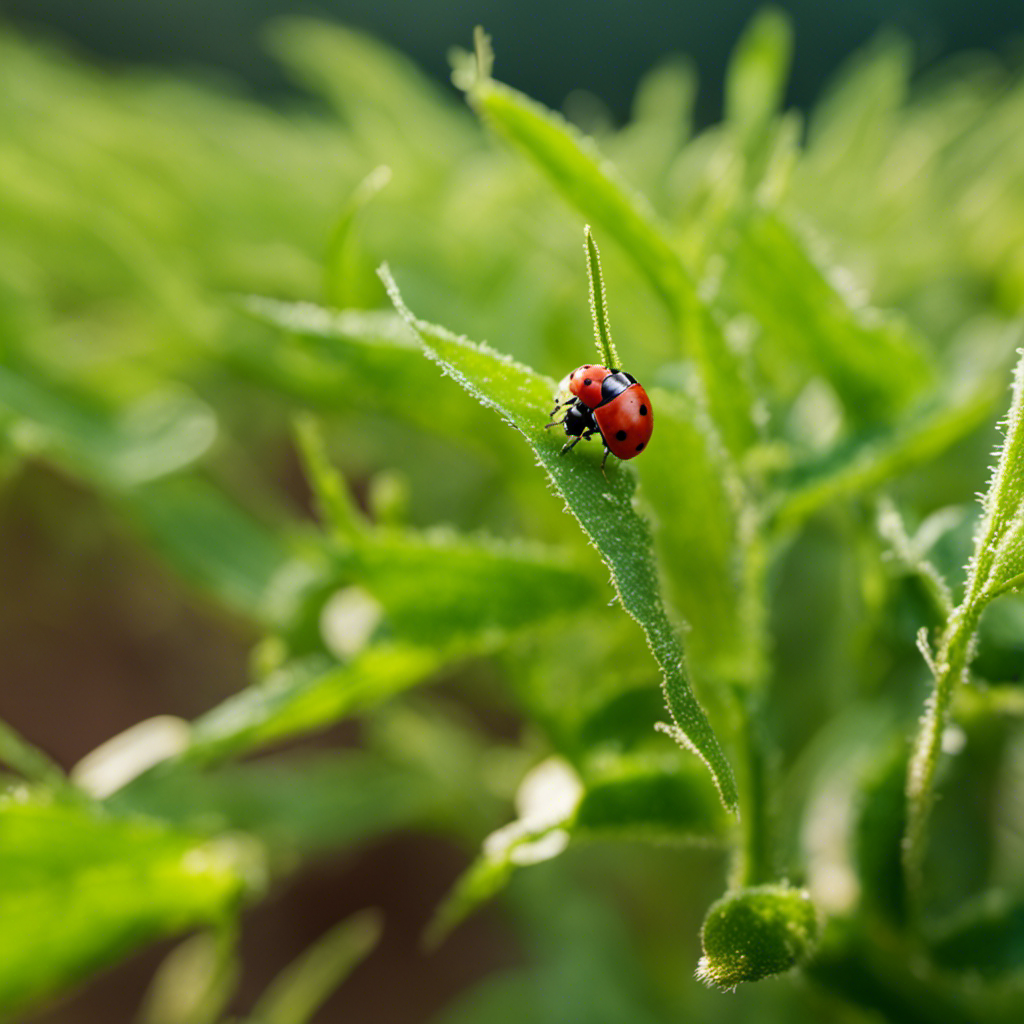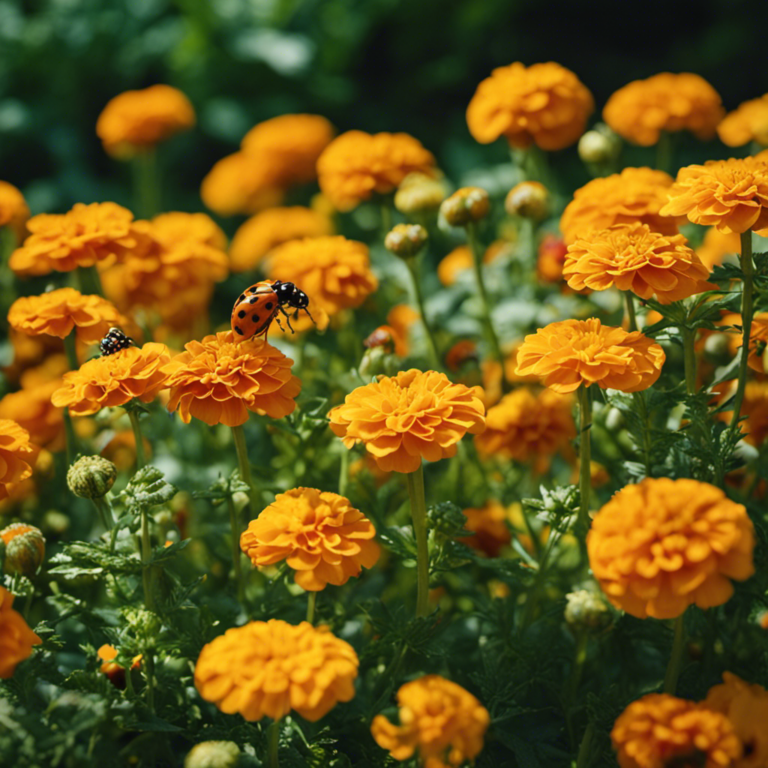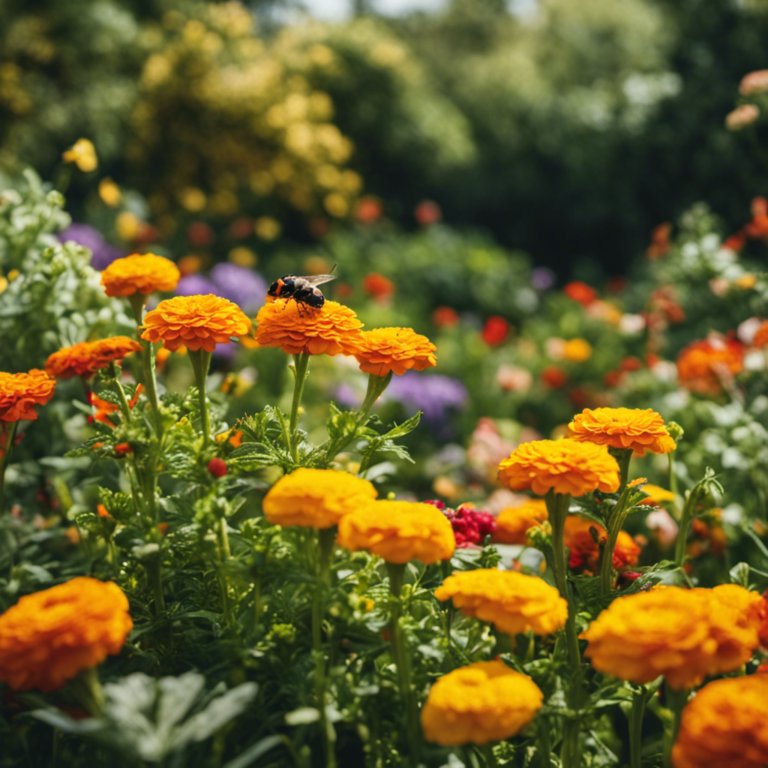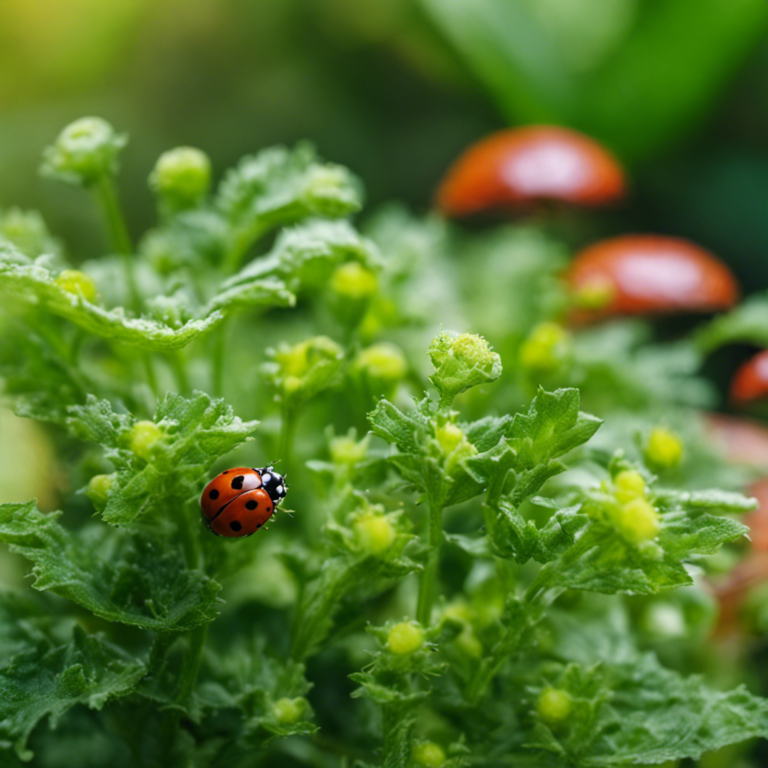Looking to protect your crops from pests while being environmentally friendly? In this article, we will explore green pest control methods for eco-farming.
Did you know that conventional pesticides can harm beneficial insects that help control pests? By incorporating natural predators and organic repellents, you can maintain a healthy ecosystem on your farm.
We will discuss techniques such as crop rotation and companion planting that have proven to be effective in keeping pests at bay.
It’s time to say goodbye to harmful chemicals and embrace sustainable farming practices. Let’s create a greener future for our farms!
Key Takeaways
Introducing Green Pest Control Methods for Sustainable Farming
By incorporating natural predators and beneficial insects, organic pesticides and repellents, crop rotation and companion planting, physical barriers and traps, as well as soil health and nutrient management, eco-farming can achieve effective pest control without harming the environment.
These methods offer sustainable solutions for farmers, promoting a healthier ecosystem and ensuring the long-term success of eco-farming practices.
It’s time to adopt these approaches and pave the way for a more sustainable future in agriculture.
Natural Predators and Beneficial Insects

Understanding the Role of Natural Predators and Beneficial Insects in Eco-Farming
Integrated pest management (IPM) is a sustainable approach to farming that relies on biological control methods. Instead of using harmful chemical pesticides, eco-farmers harness the power of natural predators and beneficial insects to effectively manage pests. These natural allies are essential for maintaining the balance of ecosystems and preventing pest outbreaks.
One example of a beneficial insect is the ladybug, which feeds on harmful pests like aphids and mites. By keeping their populations in check, ladybugs help control the spread of these pests. Similarly, lacewings, parasitic wasps, and predatory mites are known for their voracious appetite for pests. By creating a favorable environment for these beneficial insects, such as providing food sources and shelter, eco-farmers can enhance their presence and reduce the need for chemical interventions.
Embracing biological control methods not only benefits the environment but also promotes a healthier and more sustainable farming system. By relying on natural predators and beneficial insects, eco-farmers can effectively manage pests without harming the ecosystem. This approach is an important step towards creating a more sustainable and resilient agricultural system.
Organic Pesticides and Repellents

In order to improve pest control in eco-farming, you can utilize natural predators and beneficial insects, as well as incorporate organic pesticides and repellents. These eco-friendly alternatives offer effective and non-toxic solutions for safeguarding your crops against pests.
Here are four organic pesticides and repellents that you can consider including in your pest control strategy:
-
Neem oil: Derived from neem tree seeds, neem oil acts as a repellent, disrupts insect feeding, and inhibits insect growth.
-
Garlic spray: Made by combining minced garlic cloves with water, garlic spray repels a wide range of pests, including aphids, caterpillars, and beetles.
-
Pyrethrin: Extracted from chrysanthemum flowers, pyrethrin is a natural insecticide that targets various pests, such as mosquitoes, flies, and moths.
-
Diatomaceous earth: Composed of fossilized remains of diatoms, diatomaceous earth is a fine powder that damages the exoskeleton of insects, causing dehydration and death.
Crop Rotation and Companion Planting

One effective method for managing pests in eco-farming is to implement crop rotation and companion planting.
These intercropping techniques are sustainable farming practices that help control pests naturally, reducing the reliance on chemical pesticides.
Crop rotation involves planting different crops in a specific sequence, which disrupts the life cycles of pests and reduces their population. This method also helps in maintaining soil fertility and preventing the buildup of pests in the soil.
Companion planting involves growing different plants together that have mutually beneficial relationships. Some plants release natural chemicals that repel pests, while others attract beneficial insects that prey on pests.
Physical Barriers and Traps

Implementing physical barriers and traps is an effective method for pest control in eco-farming. By using these techniques, you can reduce the need for chemical deterrents and encourage the growth of pest-resistant plants.
Here are four strategies to consider:
-
Installing insect screens: Place fine mesh screens on windows, doors, and other openings to prevent pests from entering your farm or greenhouse.
-
Erecting fences: Construct physical barriers like fences or walls to keep larger pests such as rabbits, deer, or rodents away from your crops.
-
Implementing sticky traps: Position sticky traps near plants to capture and control flying insects like aphids or fruit flies.
-
Using pheromone traps: Deploy traps that emit synthetic pheromones to attract specific pests, aiding in monitoring and controlling their population.
Soil Health and Nutrient Management

Maintaining soil health and managing nutrient levels are essential for effective pest control in eco-farming. The health of your soil plays a vital role in the productivity and resilience of your farm. By implementing sustainable practices like cover cropping and using eco-friendly fertilizers, you can enhance the nutrient content of your soil and support healthy plant growth. Cover cropping involves planting specific crops during fallow periods to protect and enrich the soil. This practice helps prevent erosion, suppresses weeds, and adds organic matter to the soil. Additionally, using eco-friendly fertilizers such as compost and organic amendments provides essential nutrients to your plants without causing harm to the environment. Prioritizing soil health and nutrient management is crucial for achieving sustainable pest control and ensuring the long-term success of your eco-farming endeavors.
| Practice | Benefits | Examples |
|---|---|---|
| Cover cropping | Prevents erosion, suppresses weeds, adds organic matter | Legumes, grasses, crucifers |
| Sustainable fertilizers | Provides essential nutrients, environmentally friendly | Compost, organic amendments, biofertilizers |
Conclusion
By incorporating natural predators and beneficial insects, organic pesticides and repellents, crop rotation and companion planting, physical barriers and traps, as well as soil health and nutrient management, eco-farming can achieve effective pest control without harming the environment.
These methods provide sustainable solutions for farmers, promoting a healthier ecosystem and ensuring the long-term success of eco-farming practices.
It’s time to embrace these approaches and pave the way for a more sustainable future in agriculture.






